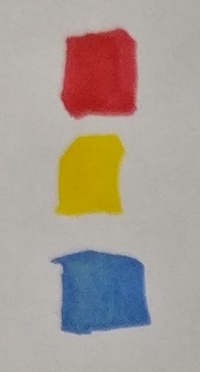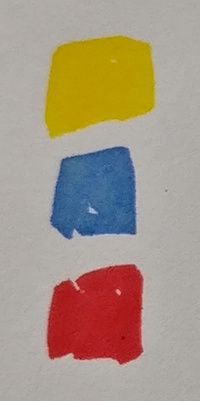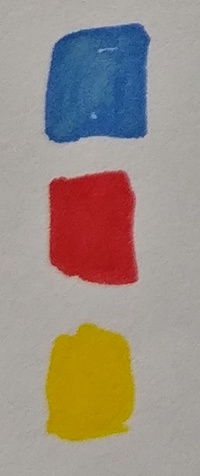Copyright © University of Cambridge. All rights reserved.
'Three Block Towers' printed from https://nrich.maths.org/
Show menu
Why do this problem?
There are two parts to this problem. Firstly, making as many different towers as you can think of, and secondly, making sure that all possible ones have been made. In order to find all possible solutions, systematic working is essential and the two different starting approches given as examples (Jemima's
and Elias' methods) can support children in understanding what working systematically might 'look like' and make them curious about other ordered way of working.
By providing opportunities for your class to reflect on different ways of solving a problem and talking about them, learners can begin to appreciate the problem-solving journey and not just the answer.
By providing opportunities for your class to reflect on different ways of solving a problem and talking about them, learners can begin to appreciate the problem-solving journey and not just the answer.
Possible approach
It would be helpful to have a lot of interlocking cubes (or stackable blocks) in three different colours for this task.
Start with a whole class activity in which you invite a child to make a three-block tower for all to see. Then ask someone else to make a different three-block tower. Invite other leaners to explain why the two towers are different. Repeat the process so that another different tower is made, again asking someone to explain why this third one is different from the first two. At this point, introduce the task and give learners time to work in pairs. You may like to give out this sheet to aid recording.
Once everyone has had chance to create a number of solutions, but not to have completed the task, share some different ways of approaching it. You can do this by drawing on methods that your learners have come up with, or by using the examples of Jemima and Elias in the problem. (If the latter, this sheet of the problem and two methods my be useful.) Invite everyone to look at each method and understand it, before facilitating a general discussion about the two different approaches. Did any pair use one of these methods? What do they like about each? What do they not like? Give time for pairs to continue to work on the problem, but invite them to choose one of the approaches they have heard about, if they so wish.
In the plenary, you could ask a couple of pairs to explain why they changed their approach, or not. Allow time to then ask one pair to try to convince everyone that they have found all the possible towers. (You may want to have warned a few pairs beforehand so they have chance to refine their arguments.)
Start with a whole class activity in which you invite a child to make a three-block tower for all to see. Then ask someone else to make a different three-block tower. Invite other leaners to explain why the two towers are different. Repeat the process so that another different tower is made, again asking someone to explain why this third one is different from the first two. At this point, introduce the task and give learners time to work in pairs. You may like to give out this sheet to aid recording.
Once everyone has had chance to create a number of solutions, but not to have completed the task, share some different ways of approaching it. You can do this by drawing on methods that your learners have come up with, or by using the examples of Jemima and Elias in the problem. (If the latter, this sheet of the problem and two methods my be useful.) Invite everyone to look at each method and understand it, before facilitating a general discussion about the two different approaches. Did any pair use one of these methods? What do they like about each? What do they not like? Give time for pairs to continue to work on the problem, but invite them to choose one of the approaches they have heard about, if they so wish.
In the plenary, you could ask a couple of pairs to explain why they changed their approach, or not. Allow time to then ask one pair to try to convince everyone that they have found all the possible towers. (You may want to have warned a few pairs beforehand so they have chance to refine their arguments.)
Key questions
How will we make sure we remember all the ways we have got so far?
How can we be sure we have the different solutions?
How can we be sure we have the different solutions?
If we cut out each individual solution, how could we order them to help?
Possible extension
Working with four blocks is a natural extension to this problem and could provide more of a focus on working systematically. This sheet could be used for recording solutions.
Possible support
Children who find this way of working difficult could be encouraged to colour their solutions on the three-block sheet provided, cut each out and order them into a pattern.



